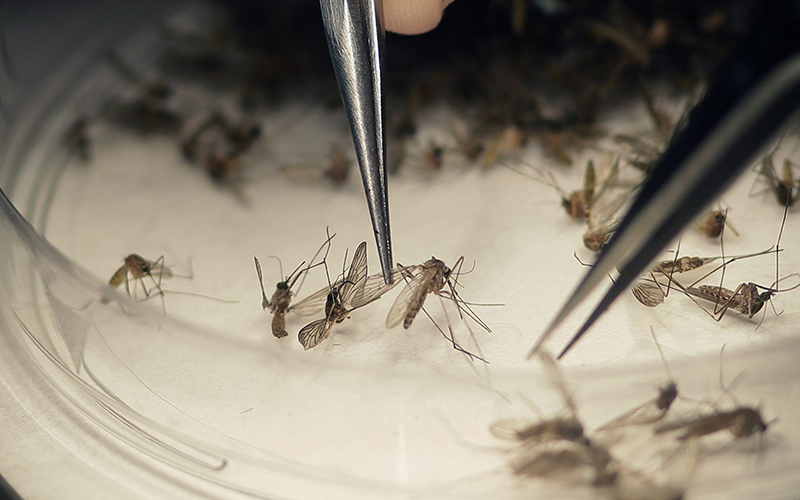TORONTO – A team of insect scientists at Brock University is poised to begin testing mosquitoes native to Canada to determine whether the biting bugs can become infected with the Zika virus and potentially transmit it to humans.

The St. Catharines, Ont., university, the only academic institution in Canada with a Level 3 containment lab that includes an insectary, received a shipment of Zika virus this week from the National Microbiology Laboratory in Winnipeg – the only other Canadian facility with a similar high-security capacity where such research can be safely conducted.
“Now that we’ve been working in the CL3 lab, we can now be proactive,” said lead researcher Fiona Hunter, a medical and veterinary entomologist who specializes in mosquitoes and other biting insects.
READ MORE: First confirmed case of Zika virus discovered in Ontario
“We don’t have to wait until some traveller comes back to Canada with Zika virus and gets bitten by a local mosquito and wait on tenterhooks to see whether or not there will be local transmission,” Hunter told a media briefing Friday.
There has been an explosion of Zika infections in South and Central America, Mexico and the Caribbean since the first cases began showing up in Brazil last May.
Most people who contract the infection have no symptoms; those that do get sick experience such ill effects as fever, joint pain, rash and red eyes. The disease usually resolves in about a week.

Get weekly health news
However, the virus has been potentially linked in Brazil to more than 4,400 cases of abnormally small heads in infants born to women who may have been infected while pregnant, as well as cases of Guillain-Barre syndrome, a neurological condition that can cause muscle weakness or even partial paralysis.
Researchers are still scrambling to determine if Zika causes both the birth defect – known as microcephaly – and Guillain-Barre.
READ MORE: UN: Stopping Zika virus may require genetically modified insects
Hunter said scientists have been blindsided by Zika, which was first detected in a rhesus monkey in the Zika forest of Uganda in 1947. Since then, the mosquito-borne disease has spread from Africa to Southeast Asia, hopped onto some Pacific Islands, and then moved into Brazil and subsequently most of South America. The disease is now also endemic in Central America, many Caribbean countries and parts of Mexico.
A number of Canadian and U.S. travellers to those areas have returned home infected with Zika.
“It always seemed to be one of those low-risk viruses that had mild flu-like conditions associated with it,” said Hunter. “So it was not on our radar whatsoever.”
On Wednesday, Hunter’s lab received four vials of a strain of Zika virus that originated in Thailand. The next step will be to grow large quantities of the virus in the lab and then begin trying to infect various species of mosquitoes native to southern Ontario.
There are about 67 different resident mosquito species in the province, but the team will concentrate on about a dozen of them – including the Asian bush mosquito (Aedes japonicus), a local relative of the Aedes aegypti and Aedes albopictus mosquitoes that are known to spread Zika.
READ MORE: Possible Zika vaccines months away from broad trials: WHO
“Since 2012, when we got the containment Level 3 lab, we’re actually able to work on live mosquitoes, infect them with various viruses and see whether or not they’re capable of transmitting by bite,” Hunter said. “That’s the important thing: the mosquito may test positive during the outbreak, but is it actually capable of transmitting?
“The big issue here is does the virus replicate inside the female mosquito, does it then travel throughout her body and eventually get to the salivary glands so that when she spits into her next blood-meal host, is she transmitting virus?”
Hunter said that along with the Aedes japonicus – which was first detected in the Niagara Region and has been steadily moving north – its cousin the Aedes albopictus is also of concern. Although it is not native to Canada, it has become endemic in southern New York State, New Jersey and Pennsylvania.
“So it’s really just a matter of time until it gets here.”







Comments